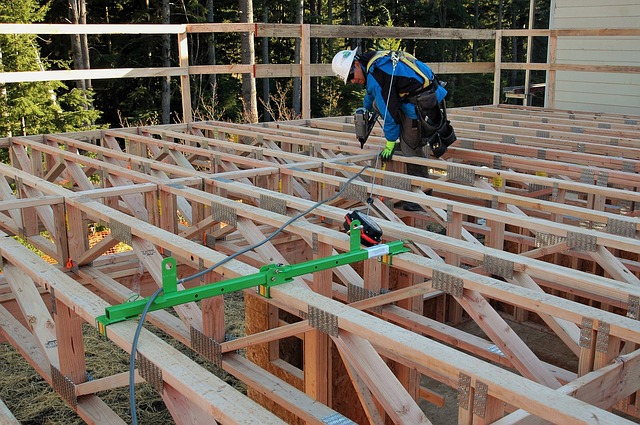One of the most frequent workers compensation claims associated with contractors is falls. Employees falling off of ladders, scaffolding, or even roofs is a serious issue and a single claim can dramatically affect your insurance premiums.
Every company should have a Fall Protection Plan that addresses the use of conventional fall protection at a number of areas on the project, as well as identifies specific activities that require non-conventional means of fall protection. During the construction of commercial and residential buildings under 48 feet in height, it is sometimes infeasible or it creates greater hazard to use conventional fall protection systems at specific areas or for specific tasks. The areas or tasks may include, but are not limited to:
a. Setting and bracing of roof trusses and rafters:
b. Installation of floor sheathing and joists.
c. Roof sheathing operations; and
d. Erecting exterior walls.
In these cases, conventional fall protection systems may not be the safest choice for builders. This is why your plan should be designed to enable supervisors and employees to recognize the fall hazards associated with this job and to establish the safest procedures that are to be followed in order to prevent falls to lower levels.
Each employee should be trained in all procedures and they should strictly adhere to them except when doing so would expose the employee to a greater hazard. If, in the employee’s opinion, this is the case, the employee is to notify the competent person of their concern and have the concern addressed before proceeding.
It is the responsibility of the Safety Director to implement this Fall Protection Plan. Continual observation safety checks of work operations and the enforcement of the safety policy and procedures shall be regularly enforced. The crew supervisor or foreman is responsible for correcting any unsafe practices or conditions immediately.
It is the responsibility of the employer to ensure that all employees understand and adhere to the procedures of this plan and to follow the instructions of the crew supervisor. It is also the responsibility of the employee to bring to management’s attention any unsafe or hazardous conditions or practices that may cause injury to either themselves or any other employees. Any changes to the Fall Protection Plan must be approved by the Safety Director.



